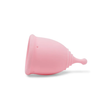
Most people think of honey when they think of bees & what they do. But it doesn't end there. In fact, bees create and collect a wide range of elements & substances as the products of their labour.
It takes more than soil, water, and sunshine to make the world green and as seen earlier, bees play a vital role in environmental sustainability. The benefits of bees are numerous, and they provide a wide range of crucial items for the public.
Beeswax
Over through time, beeswax has been utilised for a variety of intriguing reasons. Beeswax can be found in furniture wax, beauty items, lip balm, chewing gum, and the waxy coating on cheese rounds. It is a glandular secretion of worker honeybee that is utilised to make honeycombs. Humans have discovered so many uses for beeswax that it has become a valuable commodity in the world of trade and business.
Beeswax is still utilised as a food preservative and as a natural preservative in things that degrade quickly. At home, beeswax wraps are used to store food for longer and are a healthier alternative to aluminium or plastic wraps. Beeswax is frequently added to products to boost their shine. This is seen in nail paints and hair products.
Candles
Beeswax candles are available in practically any store that sells candles, but they are also a popular hobby for many. Candles made from beeswax date back to the sixth century, & our forefathers discovered additional uses for the commodity long before we did. Melted wax from candles was frequently used in cosmetics, to coat thread when stitching, to seal communication, and even as a primitive dental filling.
Propolis
Propolis is a resinous substance used by bees to seal microscopic cracks and openings in the hive. It is created when bees take resin from trees and other plants and combine it with a small amount of honey. Propolis, like beeswax, has been shown to have several health benefits. Also known as bee resin, it was commonly utilised in ancient societies to treat abscesses and small wounds. In order to plug holes in their hives, bees utilise propolis as a preventive measure to keep hazardous germs and fungi out. Some research has demonstrated its significant antimicrobial properties against a wide range of infections.
Pollen Balls
In the kingdom of plants, pollen is essentially the sperm. Bee pollen is a type of pollen ball that bees capture and store as a food source. Similarly, it is a good source of vitamins, minerals, and amino acids for humans.
Pollen contains anti-inflammatory, anti-microbial, and anti-cancer capabilities, as well as the ability to heal wounds and protect the heart by reducing blood fat levels. Because bee pollen is so nutrient-dense, athletes have employed it in their training.
Royal Jelly
The milky secretions produced by worker honey bees is known as royal jelly. Water, proteins, carbohydrates, lipids, vitamins, mineral salts, and amino acids are all present and its makeup changes according to location and climate. This product derives its name from the fact that bees use it for nurturing the queen bee.
Royal jelly is used to treat asthma, hay fever, liver disease, pancreatitis, sleep disturbances (insomnia), premenstrual syndrome (PMS), stomach ulcers, kidney disease, bone fractures, menopausal symptoms, skin issues, and excessive cholesterol. It is also used as a general health tonic, to combat the effects of ageing, and to strengthen the immune system.
Bees are nature’s amazing givers. They can cause both pain and pleasure. Moreover, they harness nature's resources and make them available to us in a variety of ways. So the next time you see a bee, try not to swat it, instead show some gratitude for what it has offered humanity.



Leave a comment